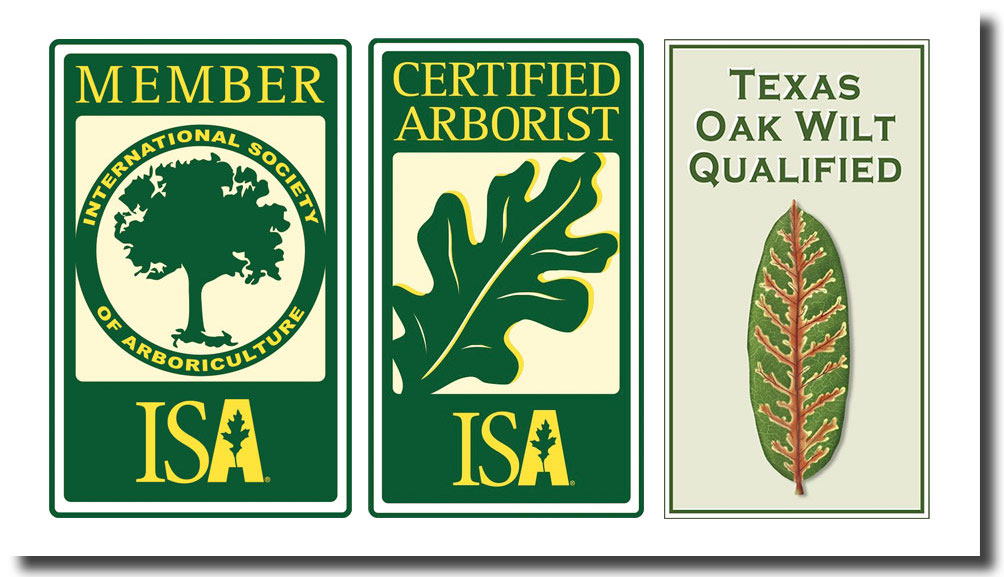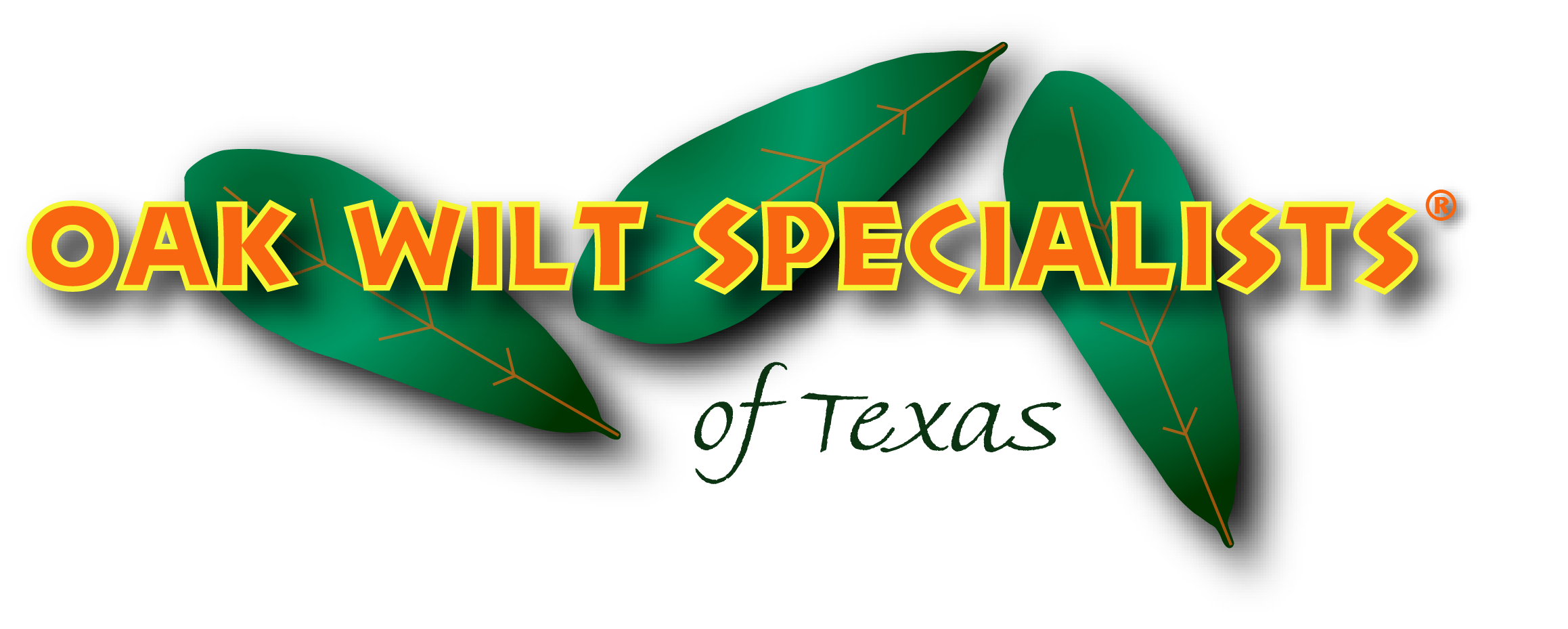
877-842-8733

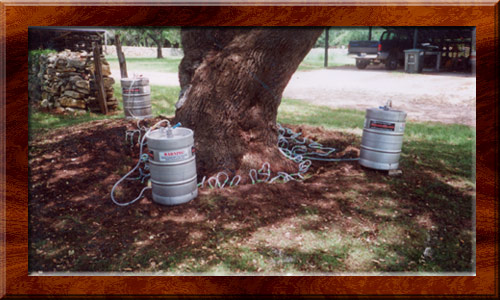
We Use the Preferred Macro Flare Root Injection Protocol
Development of the Oak Wilt Treatment
Soon after Oak Wilt was identified in Texas, a program was initiated in the Department of Plant Pathology and Microbiology at Texas A&M University to develop a strategy to combat Oak Wilt. The result is a program utilizing both cultural and chemical approaches to disease management. The chemical approach employs a fungicide to supresses the fungus.
University researchers, agriculture extension agents, the Texas Forest Service, arborists and property owners were all involved in evaluating potential pesticides. Candidate compounds were applied in many different ways: foliar sprays, soil drenches, and tree injections. It was not until the early 1980s that a fungicide containing Propiconazole (the active ingredient in Alamo®) injected into symptomatic and non-symptomatic trees was found to be effective in controlling symptom expression. Because Oak Wilt affects the entire above ground portion of the tree, the technique for application of the product (Macro Flare Root Injection) is the most effective.
Many years of field application have proven that Alamo® when applied via Macro Flare Root Injection is very effective against Oak Wilt. In fact, if the procedure is performed correctly on appropriate candidates and repeated as necessary, survival rates are 85% or better. This is pretty good, when compared to a survival rate of 15% for untreated trees.
Preventative Treatment is Best
Oak Wilt symptoms appear after substantial internal damage to the tree has occurred. While the fungicide can kill the Oak Wilt fungus, internal damage is not reversible. This is why the treatment is best performed as a preventative measure. Most trees that are treated preventatively don't experience a high degree of internal damage.
Treatment Timing is Important 📆
Timing is critical to success. There are two factors that enter into the timing equation:
▶︎ The distance of the tree to be treated from the nearest known diseased tree.
▶︎ The lifespan of the treatment.
The Texas Forest Service has utilized aerial photography to determine the expansion of Oak Wilt disease centers. The advancement of the disease averages 75 feet per year. However, there are large variations of disease spread. Many centers expand faster or slower than the average. In addition, the disease movement is often not the same in all directions. Disease center expansion is also dependent on weather conditions and tree population. Both wet weather and high tree density appear to accelerate disease movement.
Research has shown that the effective lifespan of a treatment is about 2 years. Generally, two fungicide applications are required. The time frame between injections is 18 to 24 months. For large trees the interval may be shortened to 12-18 months. After two or possibly three treatments, the threat has usually passed a particular area and further treatments may not be necessary. Inspection of your trees by a Certified Arborist on a regular basis is recommended to verify that the risk of disease has passed.
While the best time for tree treatment may be in the spring after the new leaves have set, successful treatments can be made at any time that there are sufficient green leaves on the tree to be treated. We've found that if the Oak Wilt threat is imminent, a treatment should happen soon to avoid major damage.
Make Wise Treatment Selections 🎓
When you couple treatment timing (disease movement and treatment lifespan) with the fact healthy trees benefit more from treatment we're left with the following conclusion: The best trees to treat are those that are not symptomatic but will be challenged by the disease in the next 12 months. Considering the rate of disease movement, trees closer than 100 feet to a diseased tree benefit the most from treatment.
Infected trees in early stages of symptom expression can be treated, but their chance of recovery is poorer. Although trees with symptoms have a lesser chance of recovery, high value trees with special significance to the property may be selected.
Property owners sometimes have difficulty making treatment choices. Economics may prevent a "treat every tree" strategy. One of the greatest services we provide is the thoughtful selection of treatment candidates based on timing, aesthetics, health and budget. We work very hard at putting ourselves in your situation when working out a treatment plan.
Dosage and Cost
The cost of treatment is based on the diameter of the tree as measured about four feet high on the trunk. This is known as DBH (diameter at breast height) in the arborist world. If the tree has more than one trunk, each one is measured and the total becomes the “diameter". The reason for pricing a treatment this way is straightforward. The amount of chemical used and the amount of labor required to excavate and set up each injection point is based on the diameter.
For most Live Oaks, we use 20ml of Alamo® per inch of DBH in up to one liter of water. For smaller or thinner trees, a lesser dosage may be appropriate. Our company is highly experienced at determining proper dosing for your trees.
We will provide a free written proposal for your injection project after we evaluate your Oak Wilt problem.
The Treatment Protocol
Oak Wilt Specialists uses Macro Flare Root Injection exclusively. This is the only protocol with scientific data proving positive results.
During dry periods, trees to be treated should be watered one or two days prior to the treatment and again a couple of days after treatment. A single long term soaking is preferable to several short term waterings.
There treatment process has a few steps:
1. We excavate the flare root area of each tree with an air spade. The air spade removes the soil around the roots quickly and with little or no damage to the roots themselves.
2. Injection points are drilled into the flare roots. There are approximately 2 to 2.5 injection points per DBH spaced evenly around the tree.
3. The injection apparatus is connected to the tree.
4. The tree takes up the fungicide and water mixture. This process lasts from 2 to 48 hours depending on tree and weather conditions.
5. After the tree has finished, we remove the injection apparatus and cover the flare root area with soil and mulch.
6. A small metal tag with a serial number is affixed to the tree. The tree number is entered into our "tree tag database" that records information about the treatment and the tree.
Proper tree care is essential following treatment. Trees should be watered as needed, possibly treated with a growth regulator such as Cambistat®, and mulched. These practices do not control the disease, but are important to promoting tree health.
Your particular situation will dictate the appropriate pre and post treatment strategy. We’ll help you put together a plan that makes sense for your property.
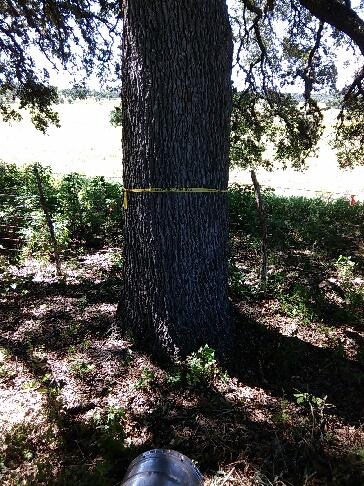
Flagged Tree
Trees to be treated are marked with flagging tape so that the customer and our technicians can identify treatment candidates.
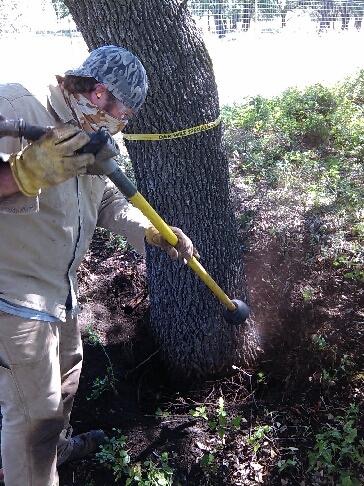
Excavation of the Tree Roots
We use a tool called an “Air Spade” that uses compressed air to excavate the flare roots of trees with no damage.

Installation of Injection Points
Small holes are drilled in the flare roots and injectors are installed. Special care is taken to identify good injection locations.
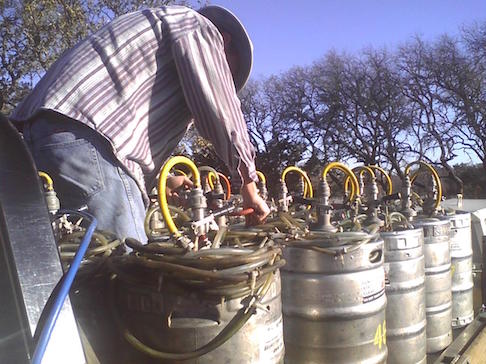
Containers Filled and Pressurized
The treatment containers are filled with the proper fungicide and water mixture. The containers are pressurized to bring the mixture to the tree.
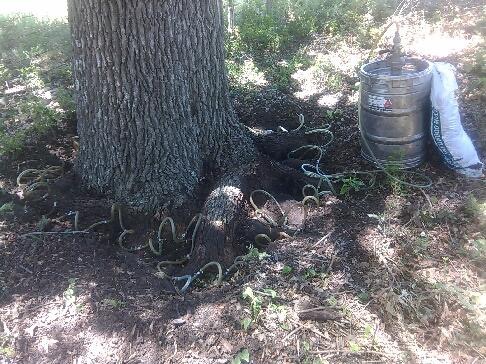
Tree Injection Underway
The treatment process takes from 2 hours to 2 days depending on tree health and weather conditions.
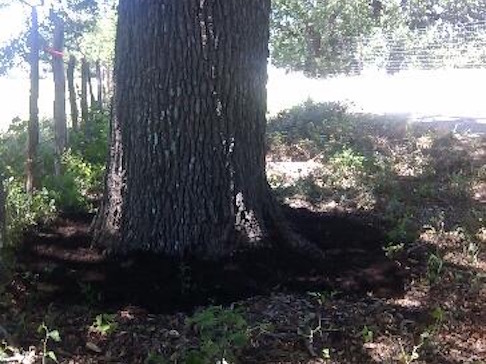
Roots Covered after Treatment
After the treatment is finished, the equipment is removed and the roots are covered with mulch and soil.
